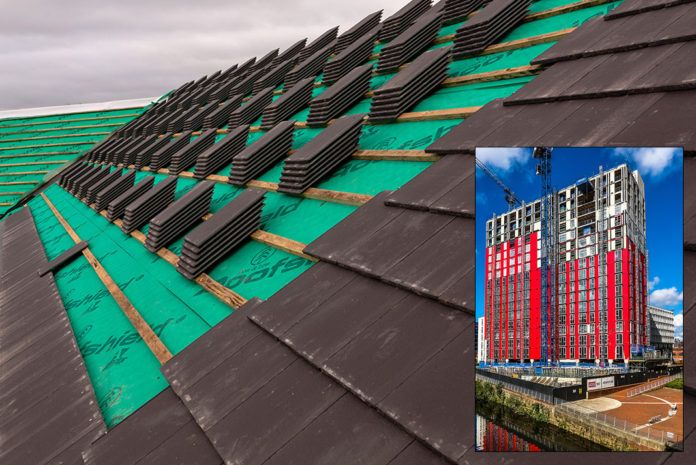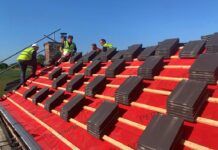
Whilst many construction sites across the country have been forced to temporarily close to reduce the spread of coronavirus (COVID-19), A Proctor Group has issued the results of tests carried out last year, which show roofing contractors they can be confident that their buildings are left protected from the elements.
British standards 5534 and 5250 address membrane requirements, but do not take into account sites being closed for over three months due to the COVID-19 lockdown.
Whilst most membranes are weather resistant for three months, the best advice is to cover as quickly as possible with the primary water shedding layer. This is an accurate action to take, as in extreme cases of weather, water ingress may occur.
What happens when external factors mean that this advice cannot be followed, and roofing or walling membranes are left exposed over the suggested maximum period? Does it mean the membrane has to be stripped and replaced before the outer layer covering is installed?
The three main characteristics which are important to the long-term protection and performance of the roof or wall are MVTR (Vapour Permeability), water holdout and airtightness.
A Proctor Group membranes have been tested quarterly for 12 months during 2019, with all of the above factors tested periodically. The results showed the membranes’ main attributes are robust enough to maintain performance in all categories, preventing the expense of stripping and replacing when sites open again.
The company is confident of its long-term durability and robustness, and the results proved interesting, especially in the current climate, where a lack of finished roof covering or rainscreen façade may leave these membranes exposed for longer periods.
Roofshield roof tile underlay was tested after nine months of exposure, and still passed the European water hold of a W1, to EN 13859 Part 1. It maintained its vapour permeability consistently over a 12-month period.
Wraptite, a fully self-adhered, airtight, vapour permeable underlay for walls and roofs maintained its vapour permeability and airtightness throughout the year. Its water hold-out for walls of W2 also remained for 12 months, which was tested to EN 13859 and W1 for over six months.
Therefore, Roofshield and Wraptite show their pedigree and durability, and rise to the challenge of protecting structures in times of site delays. They both maintain the key characteristics for the life of the building when the final covering is applied as sites reopen across the country.
While breathable membranes are designed for temporary protection and good practice is always that the outer covering is installed as soon as possible, it is comforting to know that these buildings are kept safe while you keep safe.



